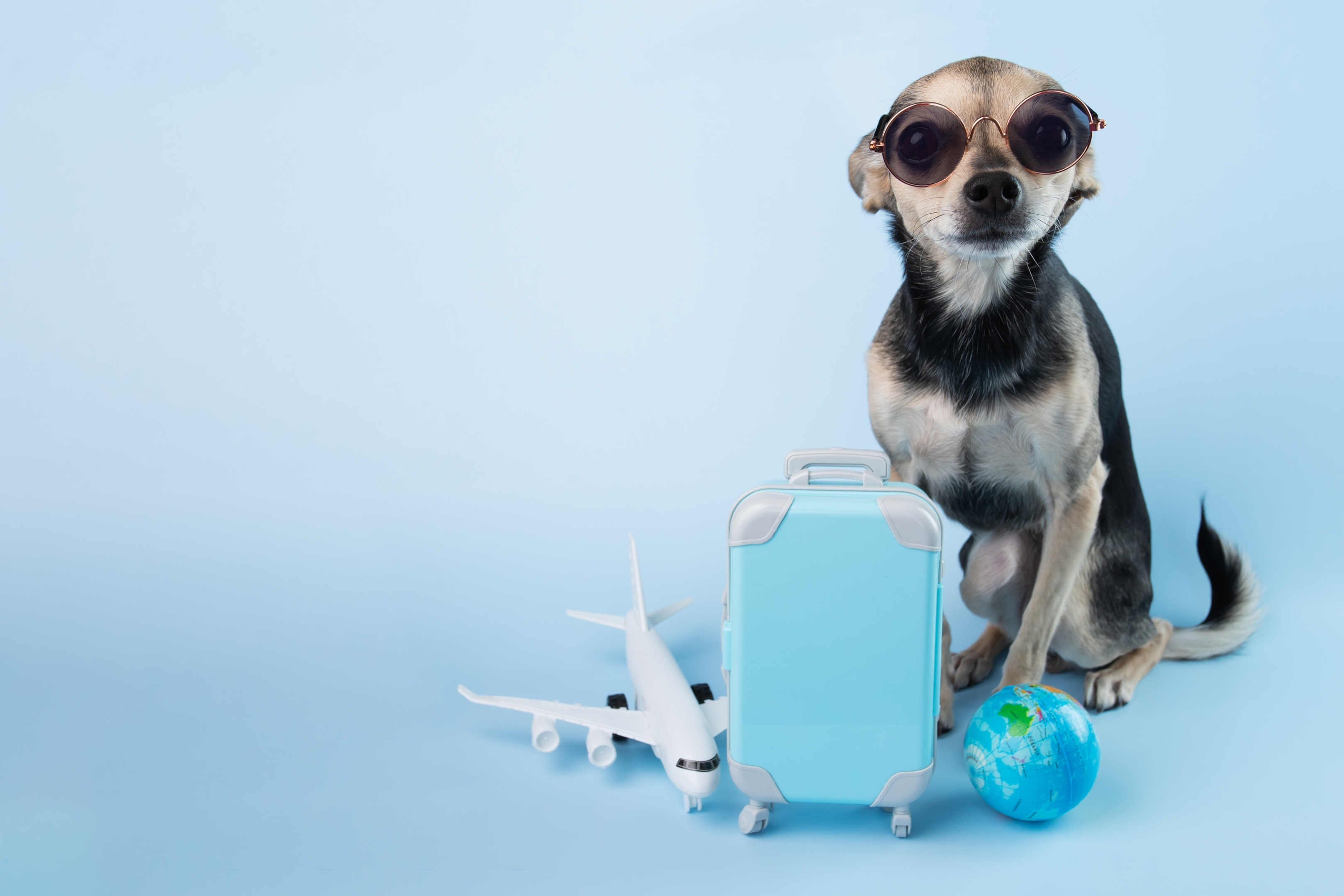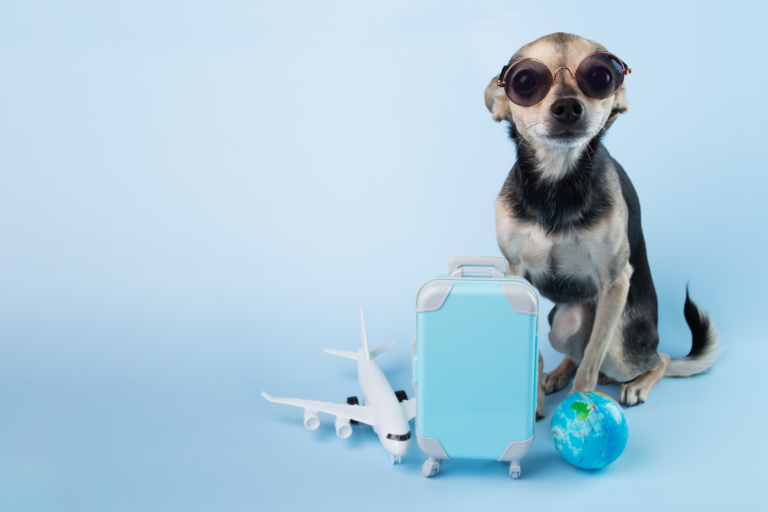Many of your clients may feel like taking their pets on vacation with them is the only option. As part of their family, their furry friend is a welcome addition to weekends away and long domestic trips. However, if they plan on bringing Fido along on an international trip, they’ll need more information before they finalize plans.
First and foremost, the requirements of traveling abroad with pets will vary depending on their vacation destination. Each country sets its own requirements for international pet travel. Even if your clients have traveled internationally with their pets before, keep in mind that laws and regulations can change at any point. You will always want to double-check with the destination country before your client starts their trip.
International Pet Travel: What are the General Requirements?

While providing a list of exact requirements isn’t possible without knowing which country is the final destination, there is some general information to be aware of regardless of where your client will visit. You will need to gather the following information as you help your clients and begin the process of travel planning with a pet:
- What type of animal is their pet?
- If a dog, what breed?
- When are they leaving the United States?
- How will their pet be traveling?
For the purposes of this article, we’ll mostly be referring to and providing information for dog owners, as that is the most common pet travel scenario. However, there are other requirements if their choice of pet is unique.
Traveling with a Pet That Isn’t a Cat or Dog
Pet birds and exotic animals will likely require the involvement of numerous agencies, such as US Customs and Border Protection, the US Fish and Wildlife Service, and the Animal and Plant Health Inspection Service. In addition to meeting the destination country’s requirements, they must also ensure they follow all the criteria for traveling of each relevant agency.
Not every type of animal qualifies as a pet. A pet is considered a companion animal that is privately owned and not intended for research purposes or reselling. Pet categories include dogs, cats, rodents, rabbits, ferrets, hedgehogs, reptiles, and amphibians. Birds are also a category of pets, but they are highly regulated due to the possibility of disease transmission. The Animal and Plant Health Inspection Service provides a complete list on its website, but below is a selection of birds that are not considered pets:
- Chickens
- Swans
- Doves
- Ducks
- Geese
- Turkeys
- Partridges
Livestock animals are also not considered pets for international travel purposes. Your client’s pig, pony, or goat may be like family, and they may think of them as a pet, but government and private agency regulations say otherwise for traveling abroad.
Traveling with Dogs and Cats

There are a few different options for international pet travel arrangements, and they largely depend on the airline your client will be flying with. The most common options are in-cabin in a carrier under the seat or in a specially ventilated cargo hold.
Only cats and smaller dogs will be allowed to travel in-cabin since they must be able to fit under the seat and stay in a carrier. Not all airlines allow this option, so check before making your client’s arrangements.
The other popular option is to transport the pet in the plane’s cargo area. There are holds specifically designed for this purpose with proper ventilation and heat. If your client is nervous about putting their furry friend in a space designated for cargo, you may be able to put them at ease by letting them know that this area will be darker and quieter than the cabin. According to the International Air Transport Association, many pets prefer this transportation method.
The third option for traveling internationally with a pet is to put them on an air cargo shipment, which is a separate flight designated strictly for cargo. How a traveler can transport their pet depends on the airline’s requirements and the regulations of the destination country. Some large dogs are required to be flown as an air cargo shipment. If this is the case, you or your travel client must make proper arrangements to pick up the dog once they land.
Dog Breeds and Country Restrictions
Few airlines restrict certain breeds of dogs, so this is something you should check with your client’s specific airline. Many airlines do not allow short-nosed breeds to travel in the cargo hold. Further restrictions include special arrangements or limits on what types of dogs can be considered service animals. Again, most airlines do not have breed requirements, but Delta, for example, previously had a policy that did not recognize pit bulls as service animals. Airline policies change frequently, so double-check with the company before flying with a dog.
There are often guidelines regarding whether a pet is considered a service animal, and many airlines state that only dogs and only trained service animals are allowed to act in this capacity.
Also, check the destination country’s laws regarding dog breeds, as some prohibit breeds considered aggressive or dogs bred for fighting. Australia’s laws regarding breed bans have been shifting recently, with a push to outlaw a few dog breeds. Currently, there are existing breed restrictions but no bans on breeds, including the American pit bull terrier.
Rabies Concerns
Additionally, the Centers for Disease Control and Prevention (CDC) restricts dogs from certain countries due to concerns over rabies. While this isn’t something to worry about when leaving the US, you should make your clients aware of this requirement if they plan on returning with their dog. The CDC website has a complete list, but the following are considered high-risk countries for rabies:
- Afghanistan
- Belarus
- Belize
- Brazil
- Some parts of China
- Colombia
- Cuba
- Egypt
- Haiti
- India
- Peru
- South Africa
- Thailand
- United Arab Emirates
Pet Health Requirements
Scheduling a vet visit is a good idea before traveling with a pet to ensure they are healthy enough to fly. However, it may also be a requirement if the destination country requires documentation of health status. Blood tests, vaccination records, and health certificates are common requirements. Many places will require travelers to provide an international health certificate, a veterinary certificate, or an export certificate prior to entering with their pet. After you verify what destination countries require, suggest that your client talk to their vet to ensure they have the necessary entry requirements for their pet.
European Union’s Pet Travel Requirements
If they travel to any country that is part of the European Union (EU), they must meet the microchip and vaccination requirements.
Microchips
Pets are required to have a microchip called a transponder to travel to any EU country. However, be aware that not just any microchip will satisfy the requirements. It must be an ISO-compliant microchip. If their dog or cat already has a chip, but it isn’t an ISO microchip, they must bring their own scanner to read the data on the chip.
Rabies Vaccination
Their pet must also be vaccinated against rabies. It’s important that they have the microchip implanted before getting an updated rabies vaccine. The first rabies vaccine after microchipping is a primary vaccination, which, unfortunately, has a one-year validity only. This EU requirement stands even if their pet’s rabies vaccine lasts more than one year.
This can be a confusing requirement, so discuss this carefully with any clients traveling to the EU. Before traveling to the EU, they must wait 21 days after their pet’s primary vaccination. There are no time limits for any follow-up booster vaccinations, but they must be accompanied by certificates from the veterinarian to show that no lapse in rabies coverage has occurred since the primary vaccination.
Other EU Pet Travel Requirements
The EU also requires a pet health certificate issued by an accredited veterinarian and endorsed by the US Department of Agriculture. Depending on their travel timeframes and other factors, they may receive a non-commercial or commercial version of this certificate.
A Pet’s Comfort on Long Flights
When planning your pet’s owner’s vacation, it is important to consider their comfort along with legal requirements. Take time to think of ways to make travel easy and stress-free for the pet. Has their pet ever flown before? Will they have connecting flights or long layovers? What weather conditions are expected? These are all questions you may want to consider ahead of time.
The following are some tips for you and your client as you prepare for the upcoming international travel that can make the process smoother for everyone:
- Practice spending some time in their pet carrier at home.
- Look for flights with fewer connections and shorter layovers.
- Travel at times when temperatures are less severe.
- Check the airline’s rules for food and water bowls for pets.
- Prepare for potential motion sickness.
- Consider ways to reduce stress for the pet while traveling internationally.
Traveling with a cat or dog internationally can be an exciting experience for everyone involved, but it’s crucial that you help your client be aware of any pet entry requirements and airline pet policies before finalizing plans.


